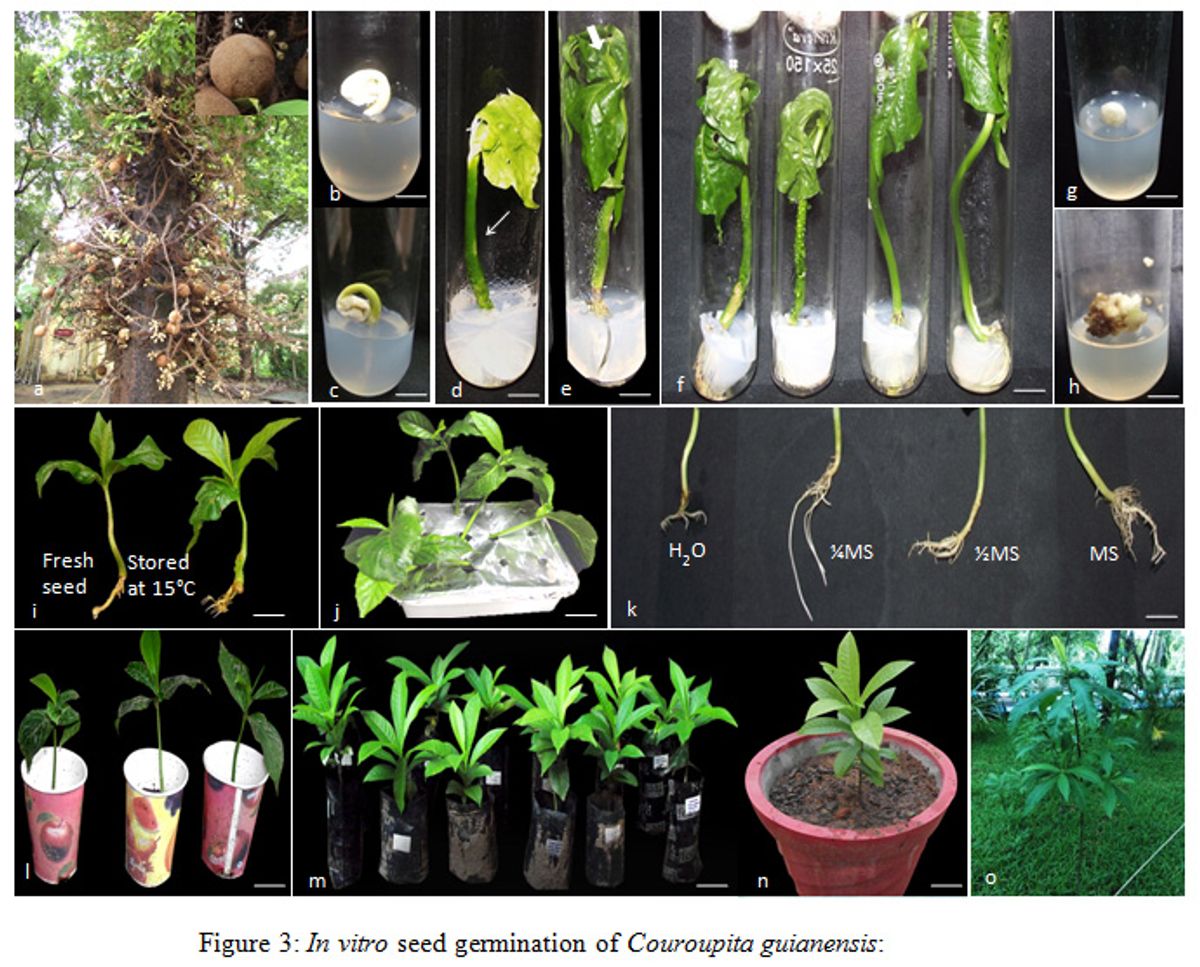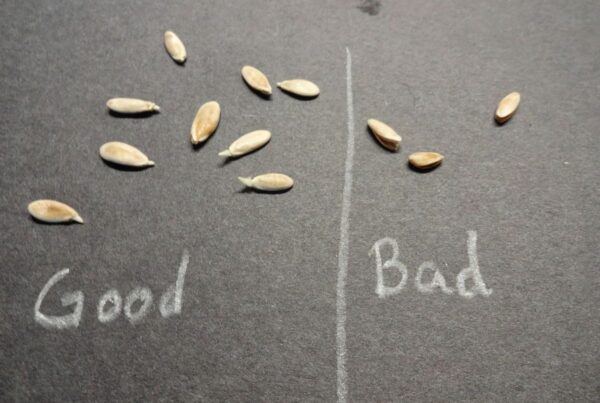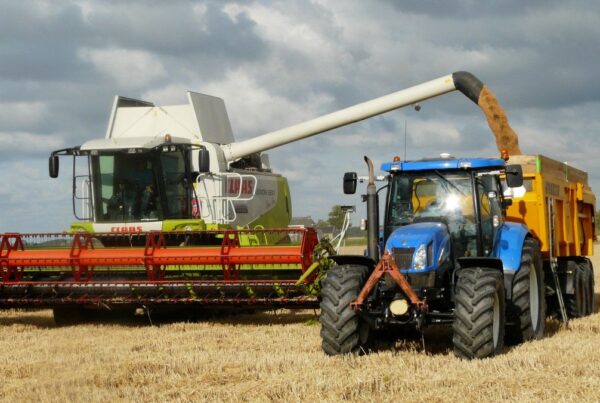Starting seeds can be a rewarding yet challenging endeavor for any gardener. From the delicate balance of temperature and moisture required for germination to the unique hurdles presented by different environments, such as Michigan’s unpredictable climate, there are numerous factors that can impact the success of your seedlings. This article delves into the common issues gardeners face when starting seeds and offers practical troubleshooting tips to help ensure your garden’s genesis isn’t left to chance.
Key Takeaways
- Proper balance of temperature and moisture is crucial for seed germination; too much or too little can lead to failure.
- A sterile environment is essential to prevent pathogens from harming seedlings; cleanliness cannot be overlooked.
- Early growth conditions set the stage for plant development; avoid common pitfalls to ensure strong, independent growth.
- In environments like Michigan, gardeners must contend with unique challenges such as damping off and erratic weather.
- Seed quality is paramount; invest in viable seeds and understand their shelf life to maximize germination success.
The Germination Game: Why Your Seeds Are Snubbing You

Finding the Sweet Spot: Temperature and Moisture Balance
Alright folks, let’s talk about the Goldilocks zone of seed germination. You know, not too hot, not too cold, just right. Seeds are like that picky friend who knows exactly how they like their coffee – and if it’s not perfect, they’re not sipping. For most seeds, you’re aiming for that cozy 65-75°F (18-23°C) range. But remember, it’s not just about the heat; it’s a tango between temperature and moisture.
Now, let’s break it down:
- Keep your soil snug in that sweet spot temperature.
- Humidity? Aim for a comfy 50% – like a spring day, not a swamp or a desert.
- Watch out for those mood swings in temperature; they’ll make your seedlings throw a fit.
Creating the perfect vibe for your seeds isn’t rocket science, but it sure is plant science. Keep it steady and you’ll be on your way to green glory.
And hey, don’t forget to keep things clean. A dirty grow room is like a buffet for nasty pathogens, and trust me, they love munching on your little green babies. Keep it tidy, and your seeds will thank you by popping up ready to party.
The Sterile Life: Keeping Nasty Pathogens at Bay
Alright folks, let’s talk about keeping your seedlings as clean as a whistle. You wouldn’t let your kids play in a mud pit and then waltz into the house without a scrub, right? Same goes for your seeds. Sterilization is your best friend when it comes to preventing a microbial mosh pit in your seed trays.
Here’s the lowdown on keeping things tidy:
- Disinfect plant pots and trays. You’re not doing your seeds any favors by letting them bunk with last year’s leftovers.
- Use fresh seed-starting mix. Think of it as a clean slate for your tiny green babies.
- Add a fan. Keep the air moving like a soft rock ballad, gentle but effective.
- Don’t overwater. You want moist, not a swamp. Overdoing it is like sending your seeds to a water park with no lifeguard.
Remember, cleanliness is next to godliness, and that’s doubly true in the world of seed germination. Keep it sterile, and you’ll be the proud parent of some healthy, strapping seedlings.
And hey, if you’ve got other plants throwing a sick party nearby, quarantine those party poopers. Disease spreads faster than gossip in a small town. Use that bleach solution like it’s going out of style, and don’t skimp on the elbow grease. Your seeds will thank you by not keeling over before they’ve even had a chance to see the sun.
When Seeds Go Silent: Troubleshooting Tips
Alright folks, let’s talk about when your seeds are giving you the cold shoulder. It’s like they’ve ghosted you, right? You’ve given them a cozy bed, the right vibes, and what do you get? Silence. Don’t panic! It’s time to play detective and figure out what’s up.
First off, check your basics. Temperature and moisture are like the yin and yang for seeds. If they’re out of whack, your seeds will just sulk in silence. Here’s a quick checklist to make sure you’re on track:
- Temperature: Is it too hot, too cold, or just right?
- Moisture: Are you drowning them or leaving them high and dry?
- Soil: Is it the type of soil they dig, or are they giving it a thumbs down?
Now, if you’ve ticked all the boxes and they’re still snubbing you, consider this: maybe it’s not you, it’s them. Seed quality matters, folks. If you’ve got old or dodgy seeds, they might just be past their prime. Here’s a quick way to test seed viability:
- Grab 10 seeds.
- Moisten a paper towel and place the seeds on it.
- Roll it up, pop it in a bag, and give it a warm spot.
- Wait a week, then check for sprouts.
If less than half sprout, it’s time to break up with that seed batch and find some fresher companions.
Remember, patience is a virtue in the seed game. Some are just fashionably late to the party, so give them a minute before you write them off.
Lastly, keep it clean, folks. Your seeds are like newborns; they need a sterile space. Any dirt or grime is an open invite for those nasty pathogens to crash the party. So, scrub up and keep it tidy. Happy troubleshooting!
Cuttings Conundrums: Nurturing Your Plant’s Baby Steps

Rooting for Success: Avoiding Early Growth Pitfalls
Alright folks, let’s talk about getting those cuttings to take root like a champ. Remember, these early days are critical. It’s like teaching a kid to ride a bike—without the right support, they’re just gonna keep falling over.
First off, you gotta pick the right time to snip those cuttings. Here’s a pro tip straight from the grow room:
- Timely Cutting Selection: Choose cuttings without flowers or buds. You want all that plant energy focused on popping out roots, not throwing a floral fiesta.
Now, once you’ve got your cuttings, it’s all about the TLC. Keep ’em cozy, but not too cozy, ya know? Here’s the skinny on temperature and moisture:
Temperature and moisture are the Goldilocks of seed germination—too much or too little, and your seeds won’t speak up. If they’re giving you the silent treatment, adjust these conditions until they’re just right.
And don’t forget to keep things clean. I mean, would you eat off a dirty plate? Neither do your cuttings. Sterilize your tools before each cut—think of it as good hygiene for your green babies.
Lastly, a little rooting hormone can be like a motivational speech for your cuttings. But remember, it’s no magic potion. Proper care is still the name of the game.
The Basement Dweller Dilemma: Ensuring Strong, Independent Growth
Alright folks, let’s talk about getting those cuttings to step out of the basement and into the sunlight, metaphorically speaking. You know the drill: you’ve got your cuttings all snug in their new homes, but instead of reaching for the stars, they’re more like that cousin who’s crashing on your couch indefinitely. We want our plants to be go-getters, not couch potatoes.
First things first, let’s make sure they’re not lounging around due to a lack of essentials. Here’s a quick checklist:
- Proper lighting? Check.
- Humidity on point? Check.
- Nutrients balanced? You bet.
Remember, these early days are critical. It’s like the difference between a well-adjusted adult and one who still lives in their parents’ basement. Get it right, and you’ll have strong, independent trees ready to face the world.
Now, if you’re still facing issues, it might be time to play detective. Are your seeds fresh and from a trusted source? Bad genes can sneak into the best of families, and plants are no exception. And don’t forget nutrition; those little green babies need all the help they can get to grow up big and strong. Keep an eye on those nutrient levels like a hawk.
Remember, growing is a labor of love, and sometimes love means being a bit of a control freak. Keep those conditions optimal, and you’ll be on your way to a happy, healthy cannabis family.
Propagation Pitfalls: Common Mistakes and How to Dodge Them
Alright, folks, let’s talk about the rookie moves in the propagation playbook. Don’t let your cuttings wilt like a sad salad at a barbecue; give ’em the love they need! Here’s the lowdown on avoiding those facepalm moments:
- Too much love: Overwatering is like helicopter parenting for plants. Let those roots breathe!
- Neglect: On the flip side, ignoring your plant babies is a no-go. Keep an eye on moisture levels.
- Bad company: Keep your cuttings away from diseased plants. It’s like keeping your kids away from the troublemakers at school.
- Recycled soil: Using old soil is like giving your cuttings hand-me-downs that don’t fit. Start fresh!
Remember, it’s all about balance. Like a tightrope walker at the circus, you gotta find that sweet spot between care and caution.
And hey, if you hit a snag, don’t sweat it. Even the best of us have had our share of ‘doh!’ moments. Just adjust, learn, and grow. That’s the spirit of a true green thumb warrior!
Seed Starting Woes: Navigating the Bumpy Road to Green Thumbs

The No-Show Nightmare: When Seeds Won’t Sprout
Alright, folks, let’s talk about the no-show nightmare – when those little green hopefuls decide to stand you up. It’s like they swipe left on germination, and you’re left wondering what went wrong. Sometimes, it’s not you, it’s them – but let’s be real, sometimes it’s definitely you.
First off, check your temps. If your grow room feels more like a sauna or an icebox, your seeds might just give up before they even start. Most seeds are like Goldilocks; they want it just right. Here’s a quick cheat sheet for ideal temps:
| Seed Type | Too Cold | Just Right | Too Hot |
|---|---|---|---|
| Cannabis | < 60°F | 70-85°F | > 90°F |
Next up, let’s talk moisture. You want to keep things damp, but not like ‘underwater adventure’ damp. Overwatering is like throwing a pool party without a pool – nobody’s having a good time, especially your seeds.
Remember, your seeds are like tiny introverts – they need a comfortable environment to open up.
Lastly, don’t bury your seeds like you’re hiding treasure. Some seeds need a bit of light to wake up, so if you’re planting them deeper than a philosopher’s thoughts, they might just snooze indefinitely. Follow the planting depth guidelines, and you’ll be on your way to green town.
Growth Stunt Double: Why Some Seedlings Stop in Their Tracks
Hey there, fellow green thumbs! Ever had one of those moments where your seedlings just decide to take an unscheduled nap? You’re not alone. It’s like they’re trying to play dead to get out of growing up. But don’t worry, I’ve been in the trenches of the cannabis game for a long time, and I’ve seen it all. Let’s crack the case of the growth stunt double.
First off, let’s talk about the usual suspects: light and water. Too much of a good thing can be bad, right? Well, it’s the same with your baby plants. If they’re stretching out like they’re trying to grab the sun, you might need to bring that light a bit closer. And if you’re drowning them in love (and water), it’s time to ease up on the watering can.
Now, here’s a quick rundown of reasons your seedlings might be slacking off:
- Too little nutrients: Just like us, plants need their vitamins to grow strong.
- Temperature swings: Plants hate surprises, especially the chilly kind.
- Drafts or low humidity: Keep it cozy and consistent, folks.
- Inconsistent moisture: Think of watering like a steady relationship, not a rollercoaster.
Remember, plants are a lot like people. They thrive with a little TLC and the right environment. So, keep it steady and your seedlings will be reaching for the stars in no time.
If you’re still scratching your head, don’t sweat it. Sometimes, it’s just about tweaking a few things here and there. Keep an eye on your green babies, and they’ll let you know what they need. Happy growing!
Indoor vs Outdoor Sowing: Tips for Every Terrain
Alright, green thumbs and budding botanists, let’s hash out the dirt on sowing your seeds. Whether you’re cozying up indoors or braving the great outdoors, each terrain has its quirks. Indoors, you’re the weather god, controlling every drop of water and ray of light. Outdoors? Mother Nature’s the boss, and she can be a bit unpredictable.
Here’s the scoop on indoor sowing: it’s like a VIP lounge for your seeds. You’ve got climate control, no pests (unless you count your cat), and the perfect stage for your seedlings to strut their stuff. But remember, it’s all about balance. Too much love (read: water) and you’ll drown the little darlings. Too little, and they’ll be gasping for a drink.
- Indoor Sowing Pro-Tip: Keep it light and airy, like a good souffle. A sprinkle of soil, a gentle mist of water, and voila!
- Outdoor Sowing Pro-Tip: Timing is everything. Dodge those drama queen weather extremes by planting when the forecast is as chill as your favorite strain.
Now, for the outdoor aficionados, it’s a whole different ballgame. You’ve got to prep the soil like you’re prepping for a hot date—make it nice and loose. Scatter those seeds like you’re feeding chickens, not dumping the whole bag in one spot. And water? Think of it as a gentle caress, not a firehose blast.
Remember, folks, whether you’re sowing indoors or out, it’s all about reading the room—or the garden, in this case. Keep these tips in your back pocket, and you’ll be on your way to a bountiful harvest. And hey, if you ever find yourself in Oklahoma, swing by and I’ll show you how we roll… out the green carpet for our plants, that is.
The Mitten State’s Seed Mysteries: Unraveling Michigan’s Unique Challenges

Damping Off: The Fungal Foe in the Fight for Seed Survival
Alright folks, let’s talk about the party crasher of the seed world – damping off. This sneaky little fungus is like that uninvited guest who shows up and ruins the vibe, turning your sprouting dreams into a mushy nightmare. It’s the rotting of seeds in the soil and destruction of newly emerged seedlings by fungi, and trust me, it’s as unpleasant as it sounds.
Now, you might be thinking, ‘But hey, I just gave my seeds the perfect cozy bed of soil and water!’ Well, that’s exactly what these fungi gatecrashers love. The same conditions that make your seeds go ‘Yay, let’s sprout!’ are also a red carpet invitation for damping off to do its dirty work. So, what’s a grower to do? Here’s a quick rundown:
- Dry out the medium as soon as those green heads pop up.
- Move your seedlings to a cooler spot to throw the fungi off their game.
- Keep an eye out for seedlings that look like they’ve been on a bender – brown at the base and slumping over.
Remember, overwatering is like giving fungi a free all-you-can-eat buffet. Don’t do it!
If you spot a tray of seedlings throwing in the towel, you’ve likely got a damping off rave happening. Time to cut the music and dry things out. And if you’re in the mood for a little detective work, keep in mind that these pathogens can hitch a ride into your grow space in all sorts of ways. Stay vigilant, my friends.
Water Woes and Airflow Affairs: Balancing the Seedling’s Environment
Alright, folks, let’s talk about keeping those baby plants happy with the right splash and breeze. Knowing how often to water seedlings is key to helping them thrive
First off, don’t drown the little darlings. Your seed starting mix should feel like a wrung-out sponge
- Moist, but not dripping. Here’s a pro tip: give it a gentle squeeze. If water runs like a river, you’ve gone overboard.
Now, let’s not forget about airflow. You want to avoid that stale, stuffy air like you’d dodge a skunk at a picnic. Make sure your green babies have enough room to breathe and aren’t packed in like sardines.
Remember, consistent moisture and good air circulation are the unsung heroes of seedling success.
And hey, if you’ve cranked up the heat or AC, or left the windows open, you might be messing with your seedlings’ vibe. Keep it steady, and they’ll be grooving in no time.
Cold Snap Capers: Dealing with Michigan’s Temperamental Climate
Alright folks, let’s talk about the wild ride that is Michigan’s weather. One day you’re basking in the sun, and the next, you’re pulling out the winter coat again. When it comes to seeds, this rollercoaster can throw a real wrench in your plans. You’ve got to stay on your toes and be ready to hustle those tender seedlings to safety when Mother Nature decides to flip the script.
Now, I’ve been around the block a few times, and I’ve seen what a sudden chill can do to a sprout that’s just finding its feet. Here’s a quick rundown to keep your green babies from turning blue:
-
Monitor the weather: Like a hawk, folks. Keep an eye on those forecasts and be ready to act.
-
Frost protection: Have your covers at the ready. Old sheets, burlap, or even a dedicated frost cloth can save the day.
-
Cold stratification: Some seeds need a cold shock to break dormancy. A few months in the fridge with a damp paper towel might just do the trick.
Remember, it’s not about outsmarting the weather – it’s about being prepared to dance with it.
Choosing the right seeds is half the battle. Go for the tough guys, the ones that can take a hit and keep on growing. Think kale, not tropical flowers. And always, always have a backup plan. Because in Michigan, the only thing you can count on is that you can’t count on the weather.
Seed Quality Quandaries: Ensuring Your Garden’s Genesis Isn’t a Gamble

The Seed Sleuth: Investigating Seed Viability and Vigor
Alright, fellow green thumbs, let’s talk about playing detective with your seeds. Seed viability and vigor are the dynamic duo that determine whether your garden will be a lush paradise or a sad, leafless wasteland. Now, I’ve been around the cannabis block a time or two, and I can tell you, not all seeds are created equal.
When you’re sizing up potential plant progeny, think of it like a job interview. You want seeds that show promise, not ones that’ll flake out on you after the first week. Here’s a quick checklist to help you separate the champs from the chumps:
- Appearance: Look for seeds that are plump and uniform; they’re the ones most likely to put down roots.
- Color: Healthy seeds usually have a consistent color without any discoloration or spots.
- Size: Generally, bigger is better. Tiny seeds might not have the reserves to make it through the germination gauntlet.
Remember, folks, a seed that looks good on the outside is more likely to be a powerhouse performer when it hits the soil.
Now, if you’re really serious about this, you can dive into some vigor tests. These are like the SATs for seeds, giving you a sneak peek at their potential. A little birdie (okay, it was a ResearchGate article) told me that vigour tests are solid indicators of whether your seeds will make it through the rough and tumble of the establishment phase. So, don’t skimp on the homework; your future plants will thank you!
Don’t Blame the Seeds: Common Gardener Goofs and How to Fix Them
Alright, folks, let’s get real for a sec. We’ve all been there, staring at a tray of soil with nothing popping up but our frustrations. But before you go blaming those little seeds, let’s make sure we ain’t committing some classic gardener goofs. Sometimes, it’s not the seeds; it’s us.
First off, let’s talk about overcrowding. Just like us, seeds need their personal space. Cramming them together like sardines ain’t gonna do anyone any favors. Give ’em room to breathe, and you’ll see a whole lot better results.
- Overcrowding Plants
- Poor Planting Technique
- Not Examining Your Soil
Now, about that planting technique. You can’t just toss seeds in the ground and expect miracles. Plant ’em at the right depth, and keep that soil moist but not soggy. It’s a delicate dance, but you’ll get the hang of it.
And hey, don’t forget to check your soil before you start. A little testing goes a long way to ensure your seeds have the best shot at thriving.
Remember, seeds are like tiny treasure chests full of potential. Treat ’em right, and they’ll reward you with some green gold. Happy planting!
The Expiration Date Enigma: Understanding Seed Shelf Life
Alright, folks, let’s talk about the elephant in the room: seed shelf life. You know, that little date on the back of your seed packets that’s often as ignored as the ‘terms and conditions’ on a software update. But here’s the deal: just like a fine wine, seeds don’t get better with age. They’re more like avocados; one day they’re ripe and ready, and the next, they’re a brown mushy mess.
So, how do you tell if your seeds are still in the prime of their youth? Well, it’s not rocket science, but it does take a bit of know-how. Here’s a quick rundown:
- Freshness: The newer the seeds, the better they’ll pop. Look for that ‘packed for’ or ‘sow by’ date.
- Viability Test: Do the ol’ paper towel test. If they sprout, they’re good to go.
- Germination Rates: Check the packet. If it says 8 out of 10 should sprout, and you’re only getting 2, it’s time to bid farewell.
Remember, seed viability ain’t just about time; it’s about how you treat ’em. Keep ’em cool, dry, and in the dark, like a vampire avoiding a suntan.
Now, I’ve seen some seed shelf life tables that claim to be the gospel truth, but take it from me, they’re more like guidelines. Seeds are living things, and they don’t follow a script. That said, here’s a little table to give you a ballpark idea:
Wrapping It Up: The Seed-y Conclusion
Well, fellow green thumbs, we’ve dug deep into the dirt of common seed issues, and it’s time to plant the flag of victory! Remember, seeds are like tiny, silent babies—they can’t tell you what’s wrong, so it’s up to you to play detective. Whether you’re dealing with the diva demands of germination or the soap opera of seedling drama, keep your head cool, your gloves dirty, and your humor intact. With a sprinkle of patience and a dash of knowledge from this guide, you’ll be on your way to a garden that’s less ‘Little Shop of Horrors’ and more ‘The Secret Garden’. Now go forth and sow with confidence—may your sprouts be strong and your harvests bountiful!
Frequently Asked Questions
Why aren’t my seeds germinating even in ideal conditions?
Even with the right temperature and moisture levels, seeds may not germinate due to factors like poor seed quality, incorrect planting depth, or old seeds with low viability. Ensure you’re using fresh, high-quality seeds and planting them at the recommended depth.
How can I prevent damping off in my seedlings?
To prevent damping off, a fungal disease, avoid overwatering your seedlings and ensure good air circulation. Use a sterile potting mix and clean containers to minimize the risk of infection.
What should I do if my seedlings sprout but then stop growing?
Stunted growth in seedlings can be due to inadequate light, over or under-watering, nutrient deficiencies, or root damage. Ensure your seedlings receive enough light, water them appropriately, and use a balanced fertilizer.
How do I ensure strong growth in my plant cuttings?
For strong growth, plant cuttings need a humid environment, indirect light, and a rooting medium that provides the right balance of aeration and moisture. Use rooting hormones to encourage root development and transplant them once they’ve established a robust root system.
What are common mistakes to avoid when starting seeds indoors?
Common indoor seed starting mistakes include planting seeds too deeply, overwatering, insufficient light, and neglecting temperature control. Always follow seed packet instructions and monitor your seedlings’ environment closely.
How long can I store seeds and still expect them to germinate?
Seed viability varies by species, but most seeds can be stored for 2-5 years under cool, dry conditions. After this period, germination rates typically decline. Perform a germination test on a small sample if you’re unsure about their viability.








